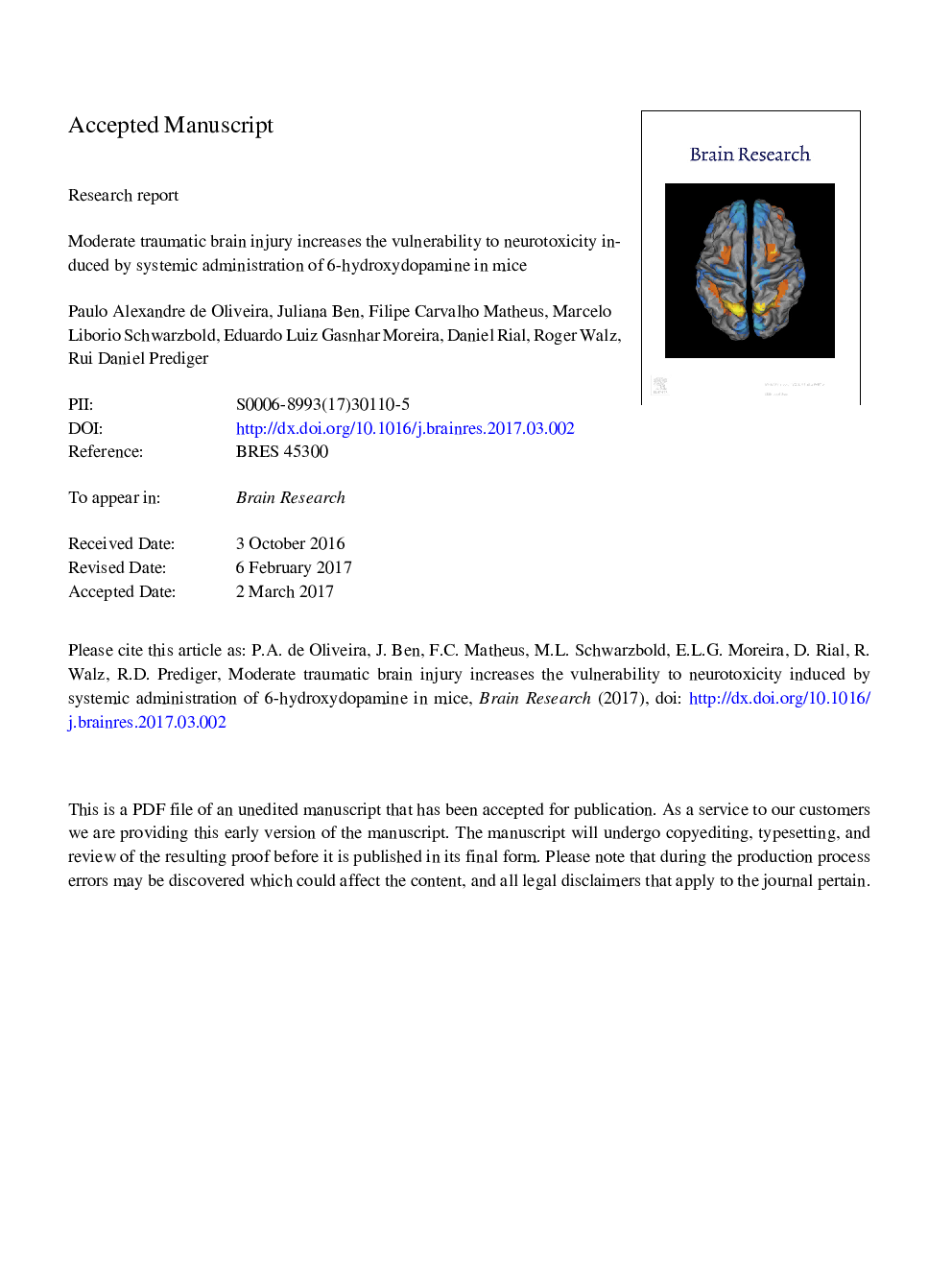| Article ID | Journal | Published Year | Pages | File Type |
|---|---|---|---|---|
| 5736646 | Brain Research | 2017 | 35 Pages |
Abstract
Moderate traumatic brain injury (TBI) might increase the vulnerability to neuronal neurodegeneration, but the basis of such selective neuronal susceptibility has remained elusive. In keeping with the disruption of the blood-brain barrier (BBB) caused by TBI, changes in BBB permeability following brain injury could facilitate the access of xenobiotics into the brain. To test this hypothesis, here we evaluated whether TBI would increase the susceptibility of nigrostriatal dopaminergic fibers to the systemic administration of 6-hydroxydopamine (6-OHDA), a classic neurotoxin used to trigger a PD-like phenotype in mice, but that in normal conditions is unable to cross the BBB. Adult Swiss mice were submitted to a moderate TBI using a free weight-drop device and, 5Â h later, they were injected intraperitoneally with a single dose of 6-OHDA (100Â mg/kg). Afterwards, during a period of 4Â weeks, the mice were submitted to a battery of behavioral tests, including the neurological severity score (NSS), the open field and the rotarod. Animals from the TBI plus 6-OHDA group displayed significant motor and neurological impairments that were improved by acute l-DOPA administration (25Â mg/kg, i.p.). Moreover, the observation of the motor deficits correlates with (i) a significant decrease in the tyrosine hydroxylase levels mainly in the rostral striatum and (ii) a significant increase in the levels of striatal glial fibrillary acidic protein (GFAP) levels. On the whole, the present findings demonstrate that a previous moderate TBI event increases the susceptibility to motor, neurological and neurochemical alterations induced by systemic administration of the dopaminergic neurotoxin 6-OHDA in mice.
Keywords
Related Topics
Life Sciences
Neuroscience
Neuroscience (General)
Authors
Paulo Alexandre de Oliveira, Juliana Ben, Filipe Carvalho Matheus, Marcelo Liborio Schwarzbold, Eduardo Luiz Gasnhar Moreira, Daniel Rial, Roger Walz, Rui Daniel Prediger,
